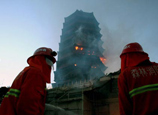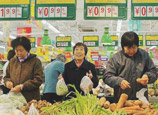
The Australian dollar will become the third currency to trade directly with the renminbi, alongside the US dollar and the Japanese yen.
According to a news release issued by the Foreign Ministry after a Tuesday meeting between Premier Li Keqiang and Australian Prime Minister Julia Gillard in Beijing, the two sides have agreed to "strengthen financial and monetary cooperation, and to launch direct trading between the RMB and the Australian dollar".
The move was viewed as a boost to economic ties between the two trading partners, as well as a vital step in the internationalization of the RMB.
Direct trading will start from Wednesday, according to an earlier statement by Gillard.
"This reflects the rapid growth of our bilateral trade and the value of two-way investment. It also creates opportunities for new financial integration," said Gillard during a visit to Shanghai on Monday.
"This (direct currency trading) will be a huge advantage for Australia, not only for our big businesses, but also for our small and medium-sized enterprises that want to do business in China," Gillard said.
Direct currency trading is the latest step in financial cooperation between China and Australia since the two countries announced a $31 billion currency swap agreement in March 2012.
China is Australia's biggest trading partner, and the destination for more than a quarter of its exports, mainly natural resources such as coal and iron ore.
Australia is the fifth-biggest source of goods bound for China, contributing to almost 5 percent of China's total imports over the past two years, The Financial Times reported, citing data from Australia's trade department.
Australia is also the largest destination for China's surging overseas investment, reaching $55.9 billion by the end of 2012, according to statistics from the China Global Investment Tracker compiled by the US-based Heritage Foundation.
However, only a small slice of China's trade in goods is settled in renminbi at the moment, although Deutsche Bank forecasts that this will rise to about 15 percent by the end of this year.

















 Stand in face of bulldozer
Stand in face of bulldozer
With water and electricity cut, lonely 'Nail House' struggling to stay


![]()
